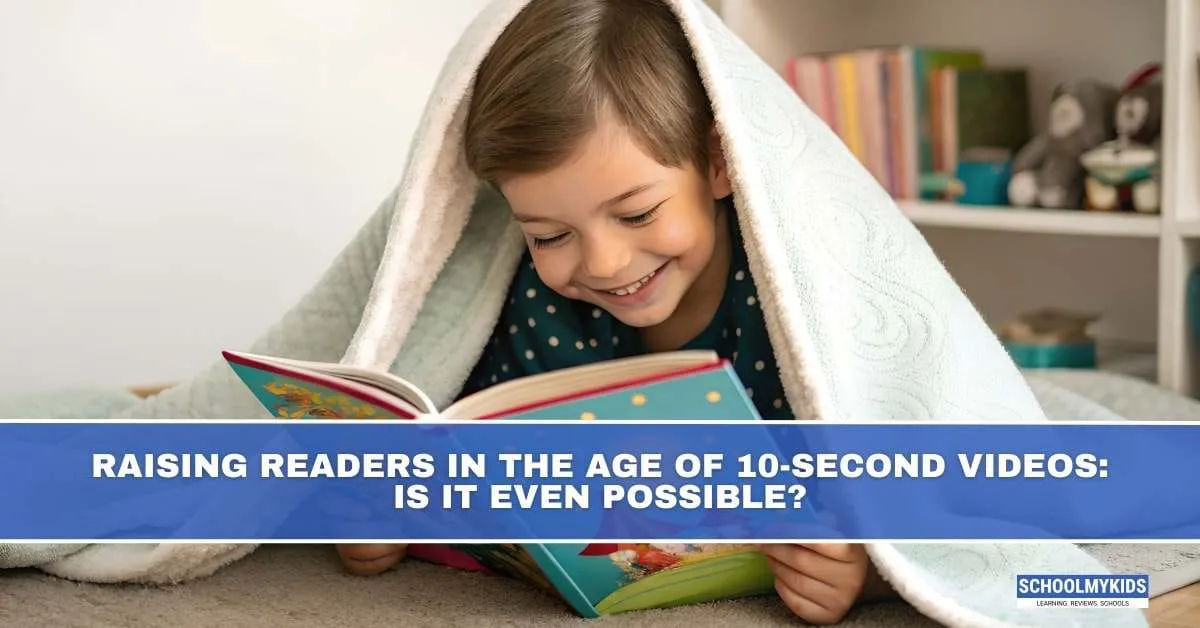A lot of kids are watching Instagram reels on 2x speed. One thirteen-year-old said normal speed is "too slow." This isn't some rare thing happening in one household. Walk into any classroom in India, and you'll see the same thing. Kids are literally speeding up content because waiting for ten seconds feels like torture. And we're all wondering about how to get these kids to sit with a book for thirty minutes when their brains are now wired for instant gratification?
Fortunately, raising readers in 2025 is not impossible. But it's also not what it used to be. The game has changed, and pretending it hasn't won't help anyone.
The Real Problem (And It's Not What You Think)
Everyone blames technology. "Kids these days are glued to screens." But here's what's actually happening: their brains are being trained for rapid-fire information. The internet rewards speed. Social media rewards quick decisions. School exams often reward quick answers. So when a kid opens a book that demands slow, deep attention, it feels like punishment, not pleasure.
It's not that they can't read. They're choosing not to because the reward system around them makes scrolling feel more valuable than reading.
Practical Tips That Actually Work
Before moving forward, let's settle something: your child probably won't become an avid reader who finishes books like a 1990s kid did. And that's okay. The goal isn't to create a bookworm. The goal is to build a relationship between your child and reading, one that actually works in the world they're living in.
1. Start with Short Books
Instead of handing your child a 400-page novel and expecting them to finish it, start small. Graphic novels. Comics. Picture books for older kids. Stories in magazines.
Why? Because you're retraining their brain. A short book they actually finish is better than a thick classic they abandon by page ten. Think of it like gym training; you don't start with the heaviest weight.
2. Let Them Choose the Genre (Even if It's Not Literature)
Your child wants to read fantasy manga, not Premchand? Fine. They're reading. Graphic novels, fantasy, horror, sports stories, any of it works. The goal is to build the habit, not to force "good taste."
Most kids who love reading started with books their parents didn't consider "proper literature."
3. Model the Behavior Without Preaching
Kids need to see their parents reading. Not audiobooks. Not podcasts. Actual reading. A book, newspaper, or article on a phone. For at least 15-20 minutes daily, when they can see it happening.
You can't tell your child that reading is important while scrolling reels. They'll call you out (or just ignore what you say).
4. Make Reading Part of the Routine, Not a Task
Instead of "go read for 30 minutes," try reading together during dinner time, or reading before bed. Make it part of the schedule like brushing teeth; not something extra that feels like homework.
For teenagers, audiobooks during commute time also count. Let them listen to books while traveling. It's reading. It's different, yes, but it's still engaging with stories.
5. Mix Media
Your child is not going to stop watching videos. So don't make it all-or-nothing.
Try this: they watch a 10-minute video summary of a book, then read the actual book. Or read a chapter, then watch a video breakdown of it. You're not fighting technology; you're using it as a bridge. This isn't ideal, but it's realistic. And it works.
6. Build a Library, Not a To-Read Pile
Physical books at home matter more than you think. When a book is sitting on the shelf, visible and accessible, kids browse and pick them up out of boredom. It's the "oh, let me just read a few pages" that turns into hours. \
Keep books everywhere: bedroom, bathroom, living room. Not in a stack they feel obligated to finish, but just around.
7. Talk About Books Casually
The worst thing adults can do is turn reading into an exam. No quizzes. No "what did you learn?" No book reports that make kids hate the experience.
Instead, ask simple questions like "What was your favorite part?" or "Would you read another book by this author?" Just a conversation, not an interrogation.
Conclusion
Your 15-year-old might never love reading the way their grandparents did. But they can learn to value deep focus. They can discover stories that matter to them. They can understand that sometimes, you need to slow down and actually read.
That's enough.
The age of 10-second videos isn't going away. The reward systems that prioritize quick content aren't changing. But within this world, you can still raise kids who read—not despite the current era, but within it.
Start small. Be consistent. Stop expecting them to have reading habits from the 1990s. Meet them where they are, and maybe, there will be a surprise in where they end up.
The job isn't to fight the internet. It's to show your child that reading offers something the internet doesn't: depth, imagination, and the ability to sit still with an idea for more than ten seconds.
That's how you raise readers in 2025.








Be the first one to comment on this story.